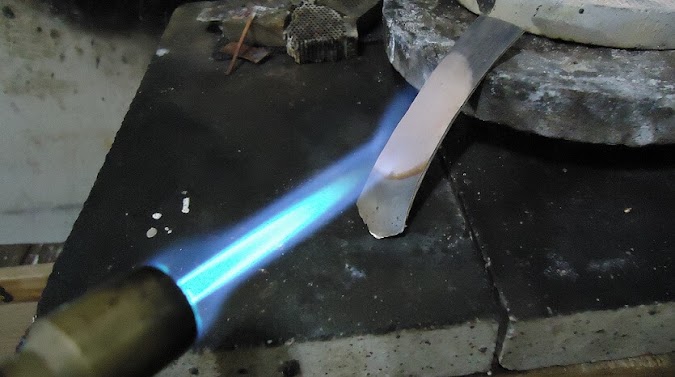Annealing Process - Objectives and Advantages, Full Annealing and Process Annealing with Annealing Temperature
What is Annealing? Importance of annealing
In metallurgy, annealing is a heat treatment that alters the properties of material; decrease hardness, make it ductile, malleable and make more workable. It involves heating of material above or below its recrystallization temperature and keeps at this temperature for a time period, then cooled slowly. The process of annealing is divided into (i) Full annealing (ii) Process annealing. Normalizing process also considered as a variety of annealing.Many metallic components initially produced as large casting then processed in its solid state by forging, extrusion, etc to its final product. This intermediate process known as thermomechanical process is done in hot or cold state and cause incidental intermediate heat treatment. During its intermediate process, the material may get hardened. In order to make material softer and machinable again, you may need to anneal the workpiece.
Objectives and advantages of annealing
- Refine the grain structure and size of material and then improve mechanical properties like ductility.
- Soften the material and then increase machinability.
- Annealing used to remove gaseous trapped inside the metal during the casting process.
- Relive internal stress setup during cold and hot working
- Relieve internal stress due to the unequal concentration in casting. Improve homogeneity in steel.
- Alter electrical and magnetic properties of the metal.
- It prepares the metal for further heat treatment.
🔗Quick difference between Full annealing and Process annealing
Full annealing of steel
The purpose of full annealing is to soften steel, make second most ductile state, and make uniform and stable microstructure. Three steps involved in process of full annealing of steel are listed below- For hypoeutectoid steel, heat steel 30 to 50 °C above the upper critical temperature. For hypereutectoid steel, heat steel 30 to 50 °C above the lower critical temperature.
- Hold the steel in above-mentioned temperature for some time (known as soaking) to takes place alteration in the microstructure. The time is approximately equal to 3-4minute for each millimeter of thickness of the large section of component.
- Cool down the metal slowly. The rate cooling varies from 30-200 °C per hour according to the composition of the steel.
 |
| Full annealing temperature ranges |


